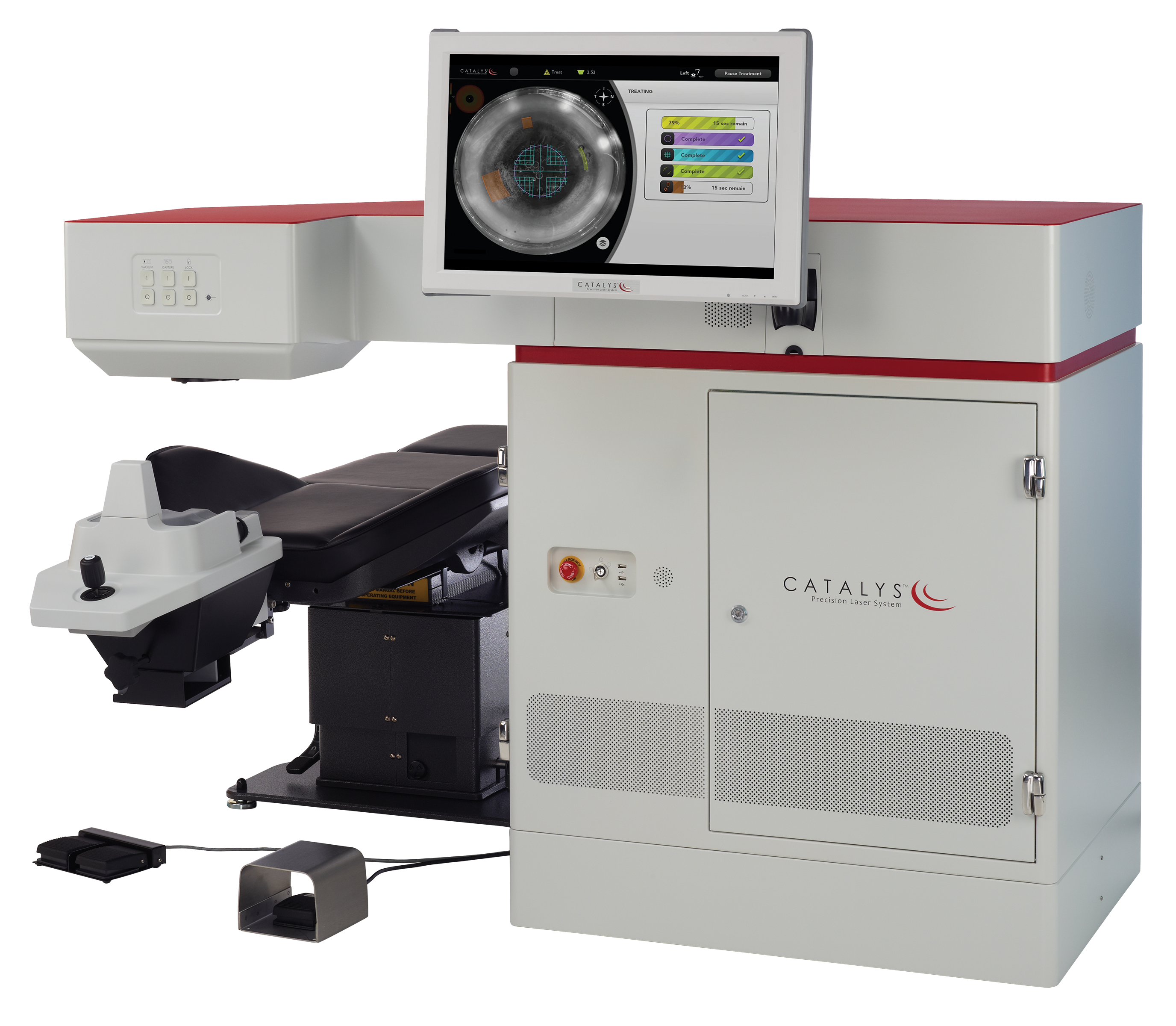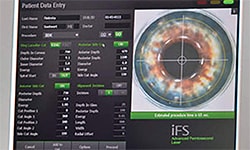Editorially Independent Content
The CATALYS femtosecond laser unit (AMO) is one of five machines that are currently approved in the United States for laser cataract surgery. There are several features of the CATALYS that I really like.
Easy-to-Use, Programmable User interface The user interface is intuitive and efficient. Everything is done on a large touchscreen featuring simple icon-based navigation. The laser can be programmed to make four cuts, including the capsulotomy, lens fragmentation, arcuate incisions, and corneal entry incisions. Users can choose all four or as many they would like. Default templates make it easy for me to set up my preferred parameters, like capsulomy size or centration methods. I like the scanned capsule feature, which uses optical coherence tomography imaging to help center the capsulotomy on the lens. In manual cataract surgery, the capsulotomy is centered around the pupil, which may not be the optimal placement for consistent 360 IOL overlap.
The surgeon has a wide array of choices on how to fragment the lens. Specific patterns for segmentation or softening can be selected based on lens density and the surgeon’s preferred intraoperative approach. I have parameters for soft cataracts through grades 4 and even 5 nuclear sclerosis with differing levels of segmentation and softening patterns. For soft lenses that do not require segmentation, I use a widely spaced waffle pattern. These parameters can be programmed as presets for easy reference.
I find that arcuate incisions are also much more accurate with the femtosecond laser than manual relaxing incisions. On the control unit, I can program the axis, optical zone, and length. I can simply alter the axis by changing the number and select the quantity of incisions to be applied. Finally, I can program the placement of the entry and sideport incisions, which can also be set up as presets.
This beautiful user interface presents me with everything needed to perform the surgery, and just as importantly make changes intraoperatively.
Gentle, Clear Patient Interface The patient docks to the unit via a liquid optics interface that is gentle and comfortable. Once the suction ring is placed and vacuum is applied, the interface is filled with a column of balanced salt solution, whichcreates a clear optical path for real-time video, optical coherence tomography imaging, and laser treatment.
The integrated, motorized bed has foam cushions that can be positioned around the patient’s head to stabilize and prevent movement. After I confirm the parameters, I deliver the planned treatment by stepping on the foot pedal.
With the liquid optics interface, I find striae or corneal deformation to be minimal and the pressure exerted on the eye to be very small. Because I operate on patients of all ages, it is important to minimize any trauma or IOP spikes.
Mitigating Micromovements The challenge with all patient interfaces is that, the softer and gentler they are, the more chance there is for micromovement of the eye to occur. Manufacturers have moved to faster treatment times to decrease the impact of these small movements on surgery. To mitigate micromovement, some systems apply a ‘hard’ applanation, which can compromise imaging, patients’ comfort, and perhaps safety. I think the CATALYS has found a sweet spot; as long as I keep micromovement in mind, I can mitigate potential issues.


